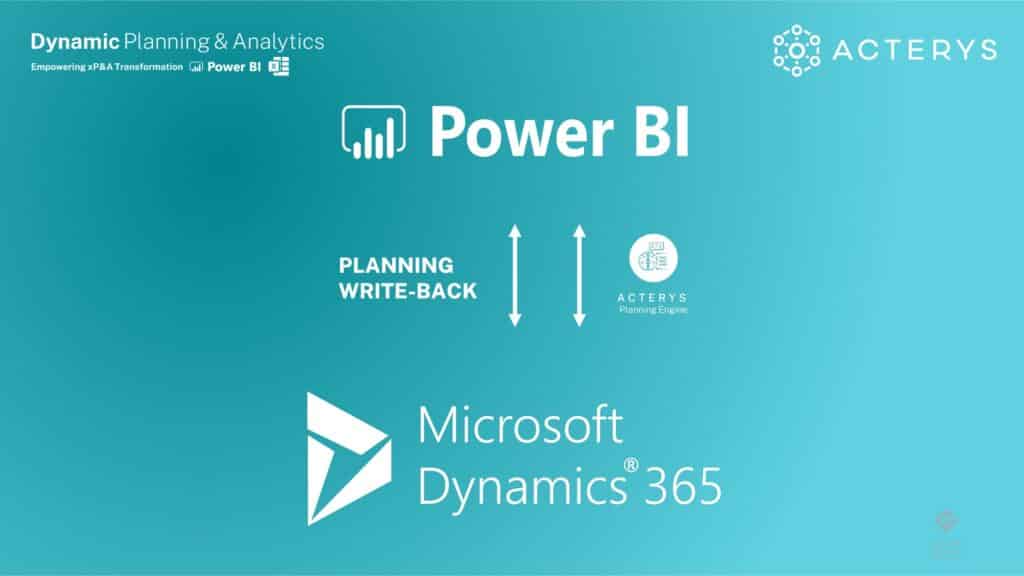
Table of Contents
Microsoft Team(s) and Power BI Enable Better Planning
Planning in larger organizations is almost always a team effort. In this blog, I am covering how new Microsoft Office standard technologies like Microsoft Teams can be used in the planning process by teams to work more effectively together and achieve significant process improvements.
Planning processes typically run as feedback loops that involve the following stages:
Planning Stage
Subsequently in the monitoring phase, the process continues in a similar fashion and includes:
Monitoring Phase of Planning Process
In every step of these processes, extensive team collaboration is required and typically involves:
- Online communication and conferences
- Management of documents
- Task management and
- Knowledge management.
[ctabutton title=”5 Best Practices for Connected Planning, Budgeting, & Forecasting” content=”Download this whitepaper to discover the perfect recipe for driving Planning, Budgeting & Forecasting transformation.” button=”Read Whitepaper” url=”https://landing.acterys.com/planning-budgeting-forecasting-best-practices”]
The Shortcomings of Legacy Planning Systems
Legacy planning systems typically cover some of the core planning functionalities to aggregate information but often don’t offer much in relation to collaboration. Some solutions offer rudimentary collaboration with own features for commenting and file uploads, to name a few. But this is typically not as productive as it could be as they don’t integrate with the overall collaboration standards of messaging and file management systems that are utilized within the organisation.
Things get worse in the analysis phase. Here, the problem starts with the challenge that legacy planning systems lack state-of-the-art data discovery features to analyze the root cause of problems. In the best-case scenario, a separate data discovery solution needs to be implemented that links planning and actual data. In the worst-case scenario, planning data needs to be moved to another platform to make it available in the data discovery solution.
Equally problematic is the lack of task management. For example, one could be ensuring that the right actions are taken to “fix problems” uncovered in the monitoring phase. This involves assigning tasks to the right person and being able to follow up on the progress efficiently. Again, this is something that’s a better part of an organizational standard than an island solution in the planning system (if it exists there at all…).
Integrating With The Standard
With Acterys, our focus is on offering best-of-breed features to support the organization’s FP&A/Performance Management processes, while integrating seamlessly with the existing organizational standards for all the aspects mentioned. We know this not just from our experience with implementing client projects, but from our experience as a globally operating, knowledge-based service provider. After trying a variety of tools we decided to implement Microsoft Teams as we found it to be the best solution that covers all our collaboration, file sharing and knowledge management as well as the integration with Power BI for analysis and planning requirements.
Microsoft Teams
Microsoft Teams is an integral part of Office365 and provides integrated team collaboration features that include: chat, video, online meetings, file sharing, professional task management plus the option to add additional Microsoft as well as other third-party applications to the team environment. One of them is Power BI. This means that the participants work in one environment where all core process requirements for the planning and ongoing monitoring process come together. With Acterys that includes being able to:
1. Chat, voice and video conference at a click of a button at any stage of the planning process
2. Make planning and data collection forms available directly from the Teams environment
3. Create and assign tasks to respond to insights in the monitoring stage
4. Enable effective file sharing and knowledge management
To see how this works in a real-life situation have a look at this video:
If you like to find out more about Team Collaboration & Planning solutions using Power BI and Microsoft Teams in your organization please don’t hesitate to touch base with us.
[ctabutton title=”Need Tailored Reporting, Planning & Analytics Solutions?” content=”Talk to our solution experts now” button=”Book a Meeting” url=”https://acterys.com/book-a-meeting/”]
Key Takeaways
- Planning in larger organizations often requires collaboration among teams which occurs in several stages, including planning and monitoring, document management, task assignment, and knowledge management.
- Traditional planning systems offer core planning functionalities but often lack effective collaboration features, data discovery, and task management.
- Acterys aims to enhance FP&A/Performance Management processes while seamlessly integrating with existing organizational standards.
- Microsoft Teams, part of Office 365, offers comprehensive team collaboration features, including chat, video conferencing, file sharing, and task management.
- With Acterys and Microsoft Teams integration, users can easily engage in chat, voice, and video conferences, access planning and data collection forms within Teams, assign tasks to address monitoring insights, and facilitate effective file sharing and knowledge management.
FAQs
1. Why is team collaboration crucial in the planning process?
Team collaboration is critical in the planning process because it involves multiple stages and requires input from various stakeholders within an organization. Effective collaboration enables real-time communication, allowing teams to discuss strategies, make informed decisions, and address issues promptly.
2. What are the shortcomings of legacy planning systems?
Legacy planning systems often fall short in terms of modern collaboration needs typically lacking robust collaboration features, advanced data discovery features, and task management features.
3. What advantages does Microsoft Teams offer for planning processes?
Microsoft Teams offers several advantages for planning processes. It provides a comprehensive set of collaboration features, including chat, voice and video conferencing, online meetings, and professional task management. Teams also supports file sharing and knowledge management, making it a versatile platform for collaborative work. Furthermore, Teams can seamlessly integrate with Power BI, allowing users to access data-driven insights and reports directly within the collaboration environment.




